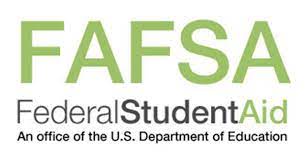By Jackson Gianchetta
As many students at Ponte Vedra High School continue to navigate the college admissions process, issues have sprung up concerning the FAFSA, the form used by the United States Department of Education to determine eligibility for student aid. Plagued by website glitches, formatting errors, and financial aid miscalculations, the program’s tumultuous rollout appears to be the main culprit, causing frustrating issues for many prospective college students.
Issues with the FAFSA began in the fall when the Department of Education announced the release of a “new, streamlined FAFSA” was to be delayed past the standard Oct. 1 release date into late December. At the time of the form’s ultimate release on Dec. 30, many students were surprised to find that the form could only be accessed at certain times of day, generally from 8 a.m. to 8 p.m., and frequently experienced glitches, wait times, and server issues that further complicated an already difficult process. The largest issue however, appears to be the form’s tendency to underrepresent those who qualify for certain income-based financial aid programs.
So, why was the form the changed in the first place? In 2021, Congress mandated that the Department of Education must work to streamline the FAFSA process. Citing problems such as the forms’ length and complexity, lawmakers felt the FAFSA needed to become more user friendly in order to be accessible to as many college hopefuls as possible. Chief among these reforms suggested by legislators was the restructuring of requirements for the federal Pell Grant program to encompass a greater number of low-income students. In order to meet these criteria, the Department of Education developed a new algorithm, exempting more household income from being used to determine eligibility. There’s only one problem, the algorithm was never adjusted for inflation.
Under the current system, as more of a household’s income is exempted, they are designated as eligible for more financial aid. A failure to adjust for inflation causes it to appear to the Department of Education that families have a greater annual income than they actually do. This means that as of right now, students across the country may miss out on aid they are otherwise entitled to as a result of a calculation error.
So that begs the question, what is the government doing right now to resolve this issue? The short answer is that it’s a little unclear. Financial Aid offers are likely to be pushed back even further as the Department of Education has stated it will not transmit data to colleges until the end of January. Outside of that small delay, it appears the government has no plan to resolve these issues over this admissions cycle, instead opting to delay any changes to the following year, citing “timing and data constraints” in a December report in the Washington Post. While the Department of Education has yet to release an official statement on issues with the FAFSA, a DOE spokesperson furthered echoed these reports in a Jan. 23 interview with NPR, confirming the department has no plans to rectify issues with aid until the 2024-25 award cycle. Unfortunately, an entire class of college students may just be out of luck.
Understandably, these developments pose a major challenge to many students. Ms. Lee, the College Counselor at Ponte Vedra High School suggests students with any concerns “keep in touch with the college’s financial aid offices” and look to online tools such as updated financial aid calculators to get a better picture of what their financial aid may look like. Any further questions should be directed to Ms. Lee, whose contact information can be found on the Ponte Vedra High School website under the “College Planning” page.





